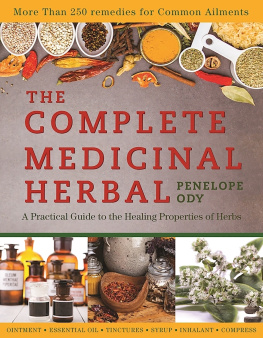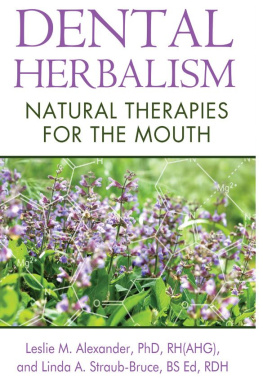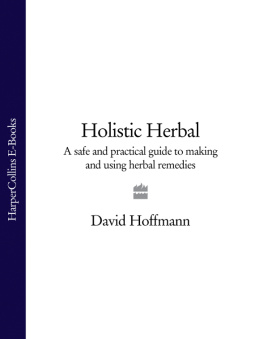Oral Health, Naturally: Homemade Toothpaste and Mouthwash Recipes
Written by Kirsten Anderberg, Summer 2006 and January 2011
Copyright 2011 by Kirsten Anderberg
All rights reserved. No part of this book may be reproduced in any form, except for brief reviews, without the written permission of the author. All photographs copyright Kirsten Anderberg. Contact kirstenaATresist.ca for more information. Visit www.kirstenanderberg.com for more articles by K. Anderberg.
Published by:
Kirsten Anderberg
P. O. Box 537
Ventura, CA 93002
Dedication
Dedicated to the hopes that someday there will be a universal dental care program for all.
Chapters
Chapter 1: Reasons to Make Your Own Oral Hygiene Products
Chapter 2: Homemade Toothbrushes
Chapter 3: Toothpaste/Powder Recipes
Chapter 4: Homemade Mouthwashes
Chapter 5: Foods for Oral Health
Chapter 6: Remedies
Chapter 7: Herb Suppliers
Chapter 8: Commercial Oral Care
Chapter 9: Natural Oral Health Links
Introduction
Most Americans are used to buying everything necessary for oral hygiene in prefabricated, mass-produced packaging, but people all over the world, and in times past, have used natural toothbrushes and toothpastes made from plants growing around them. The precursor to the modern toothbrush was a twig and the first toothpastes were herbal powders with natural binders. Plants traditionally used for oral hygiene contain beneficial oils and properties for teeth, gums and the mouth. This article will explore different ways to take care of your teeth and mouth naturally, and is the culmination of 30 years of assimilated research on natural oral care by the author.
DISCLAIMER: Do not eat, drink, or use any plant medicinally, internally or externally, if you have not fully studied and identified the herbs properly. Please consult with your doctor and/or local alternative herbal care specialist before using herbs you are not familiar with. It is safest to buy organic herbs from a licensed seller such as Mountain Rose Herbs (www.mountainroseherbs.com ). I wildcraft many of my own herbs for personal use but it is wise to find out the history of the land you wildcraft herbs on. One of the places I use is an abandoned organic herb farm and the owner allows me to forage amongst the weeds. I have found abundant nettles, comfrey, calendula, blackberry and other medicinal herbs for use from that overgrown and now unused area in a rural part of town. I tell you this as an example of safe foraging. It makes no sense to wildcraft herbs growing on toxic land as you bring the pollution home with you, so be aware of the health of the soil, not just the plants, that you use in and on your body. It is never wise to collect herbs from the side of the road, for example, as they are full of pollution from car exhaust. Be cautious of collecting herbs on public land in cities, as the area may have been sprayed with pesticides. Use your head, and again, the safest route is to buy herbs from a licensed herb store unless you have extensive backwoods training in herb identification and have knowledge of the history of the land the plants are growing on.
Chapter 1: Reasons to make your own oral hygiene products
1. Quality Control! Use fresh, organic ingredients, without any chemicals.
2. No Preservatives! Homemade cosmetics don't need long shelf lives.
3. Eco-Friendly! Reduce packaging by reusing bottles and jars.
4. Reduce Pollution! Though Tom's toothpaste sounds like it's made in Tom's backyard, I hear the Tom's factory in reality is an industrial eyesore. By making your own cosmetics, you eliminate the industrial pollution created by mass-marketed cosmetics.
5. Save Money! Pick wild herbs, or grow a medicinal herb garden yourself, then make your own tonics, and save!
6. Cultural History! Your grandmother made many of her own cosmetics, it is a lost Do-It-Yourself art. Ask her about it!
Chapter 2: Homemade Toothbrushes
In the now out-of-print 1972 book, "The Tooth Trip," by hippie dentist Thomas McGuire, D.D.S., the author speaks of three plants with "fairly good bristles," which make good natural toothbrushes. The three plants he mentions are Marshmallow, Alfalfa and Licorice Roots.
Marshmallow Toothbrushes : To make marshmallow root toothbrushes, he suggests you cut 5 inch long pieces of the root (pick straight sections), and then unravel or peel the two ends, like untwisting a rope. You then boil them with a few cinnamon sticks to flavor and soften them. Once they are tender, remove them carefully from the boiling water and soak them for 24 hours in brandy to dry and strengthen them. Then the roots are died in a warm oven or warm room. Once they are dried, you can bundle them together and attach them to a handle or just use them with your fingers. To use root brushes, you need to soak them a few minutes in warm water to soften them before you can use them, but then you can add toothpowder or paste and brush just as you would with a nylon bristle brush. Chewing on marshmallow roots is recommended for teething babies and people with raw or sore gums or mouths as the mucilage soothes the irritations, thus its use as a toothbrush can also offer some soothing effects.
Alfalfa Toothbrushes : To make alfalfa root toothbrushes, Dr. McGuire says you can take alfalfa roots that are thick around in diameter, and then strip off the outer skin or bark. Then you dry them slowly at room temperature. When the roots are dry, cut them into 3-5 inch pieces. Then hit each end with a hammer to break up the fibers and form a brush. Beat it only enough to make bristles. Then you can fold the roots in half and bundle them. Remember to soak them in warm water before using.
Licorice Root Toothbrushes : The last toothbrush McGuire suggests from natural fibers is made from licorice root. He says this one is especially good for tender and delicate gums, and from my own herbal knowledge, I can also tell you licorice root is helpful to digestion, and this toothbrush is already flavored! Select straight roots and cut 3-5 inch pieces, dry them by mild heat, then take off the outer layer of skin at each end. Fold the roots over in half, and bind to make a handle. The number of roots needed for a root brush varies with the size of the roots. As you can see from Dr. McGuires examples, you can use any twig that is hard and can have an end broken down into fibers, as long as it is nontoxic. I bought the book The Tooth Trip, at the Ravenna Co-op (health food store) in Seattle in 1979, and still have my original copy to this day. You can order used copies of this book on Amazon at reasonable prices and I recommend it highly. It is a great down to earth, easy to understand primer on natural tooth and mouth care.
Other plants/trees used for toothbrushes around the world include bay, eucalyptus, oak, neem, fir, and juniper. I am not sure I would use some of those, as I would not ingest eucalyptus, so brushing my teeth with it seems like a bad idea. Use common sense and wisdom. If you would not eat the plant, it is probably not a good idea to make it into a toothbrush! This reminds me of Dr. Bronners Peppermint Soap and its label recommending one of its many uses as a toothpaste. I have tried that, and do not recommend it! The liquid peppermint soap foams in your mouth and tastes like soap, which is not pleasant at all.
In the following recipes, I use these abbreviations: t. = teaspoon, T. = Tablespoon, c. = cup
Chapter 3: Homemade Toothpaste/Powder Recipes
Eggplant Tooth Powder : In the wonderful book, "Living On The Earth," by Alicia Bay Laurel, from the same era, 1971, there is an unusual "Eggplant Tooth Powder" recipe. (This book is also now out-of-print and was one of my favorite books as a teen, in the 1970s. It is packed with useful information about how to live more naturally. Though now out of print, copies are still available at reasonable prices on Amazon.) The books eggplant tooth powder recipe says to cut the insides of an eggplant into cubes, then wrap each cube in foil and put them into hot coals. After about 15 minutes, the eggplant will turn black and crumbly. If it turns white it is too done, throw it out. Take the black eggplant powder and mix with equal parts of sea salt. Store in jars. The book says, "Eggplant cures many gum diseases. Salt is also very good for the mouth." Leslie Tierra, herbalist, also recommends a preparation of the ash of eggplant, which she says will cure "any toothache, pyorrhea, and other mouth and gum disorders." And since we are told to gargle with salt water to help reduce infections in the mouth when injured or even when sick with a cold, it does make sense to use salt as a toothpaste as well. The only thing I wonder about with using straight salt as part of a toothpaste is it could burn sensitive areas and be a bit harsh for daily brushing, I think. Perhaps brushing with a tooth powder heavy in salt would be best just once or twice a week, is my own opinion.
Next page




